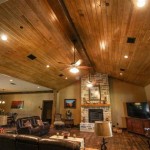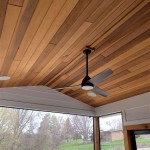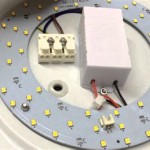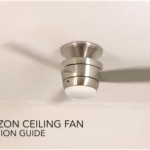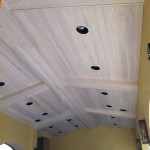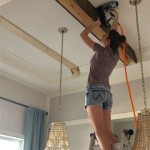Types of Ceiling Finishes: Pictures and Names
Ceiling finishes are a crucial component of interior design, contributing significantly to the aesthetic appeal, acoustic properties, and overall value of a space. The ceiling, often overlooked, offers a vast canvas for creativity and can transform a room from ordinary to extraordinary. Selecting the appropriate ceiling finish requires careful consideration of factors such as budget, style, the intended function of the room, and existing architectural details. This article explores various types of ceiling finishes, providing visual examples and respective names to facilitate informed decision-making.
Painted Ceilings: A Versatile Standard
Painted ceilings represent the most common and cost-effective ceiling finish. The versatility of paint allows for a wide range of color options and textural effects, making it adaptable to diverse design styles. Paint can be applied directly to drywall, plaster, or even wood, offering a relatively simple and efficient way to refresh or completely transform a room. The preparation of the ceiling surface is critical for achieving a smooth and flawless painted finish. This typically involves cleaning, sanding, and priming the surface to ensure proper adhesion and a consistent appearance.
Choosing the right type of paint is equally important. Flat or matte finishes are ideal for concealing imperfections and reducing glare, making them suitable for bedrooms and living rooms. Satin or eggshell finishes offer a subtle sheen and are more durable and easier to clean, making them suitable for kitchens and bathrooms. Gloss finishes, while highly reflective, are best used sparingly as they tend to accentuate imperfections. Specialized paints, such as mold-resistant paints, are available for areas prone to moisture.
Beyond the basic application of a single color, painted ceilings can be enhanced with various techniques. Faux finishes, such as stenciling, sponging, or rag rolling, can add depth and character. Stripes, patterns, and murals can create a focal point and reflect personal style. Textured paints, containing aggregates that create a raised surface, can add visual interest and conceal minor imperfections. The possibilities with painted ceilings are limited only by imagination and skill.
Drywall Ceilings: Smooth and Seamless
Drywall, also known as gypsum board, is a widely used material for creating smooth and seamless ceilings. It consists of a gypsum core sandwiched between two layers of paper. Drywall is relatively inexpensive, easy to install, and provides a good base for paint or other finishes. A key advantage of drywall is its ability to create a level and uniform surface, hiding imperfections in the underlying structure.
The installation of drywall ceilings requires careful attention to detail. Sheets of drywall are attached to ceiling joists or furring strips using screws or nails. The seams between the sheets are then taped and covered with joint compound, also known as drywall mud. Multiple coats of joint compound are typically applied, each layer being sanded smooth to create a seamless transition. This process, known as drywall finishing, requires skill and patience to achieve a professional-looking result.
Drywall ceilings can be finished in various ways. The most common is to paint the surface after the joint compound has dried and been sanded. Alternatively, drywall can be textured with various techniques, such as spray-on texture or hand-applied stipple, to conceal imperfections or add visual interest. Drywall can also be used as a substrate for other ceiling finishes, such as wallpaper or decorative panels. A smooth, well-finished drywall ceiling provides a clean and modern aesthetic.
Texture Ceilings: Adding Dimension and Hiding Imperfections
Textured ceilings introduce dimension and visual interest to a space. They are often chosen to conceal imperfections in the underlying ceiling surface, such as cracks, unevenness, or patching. Various techniques and materials can be used to create textured ceilings, each resulting in a unique appearance. However, it's also true textured ceilings are not always popular and can be difficult to remove creating a potential disadvantage.
One of the most common types of textured ceilings is the "popcorn" or "acoustic" ceiling. This finish, created by spraying a mixture of polystyrene or vermiculite onto the ceiling, was popular in the mid-20th century for its sound-dampening properties. However, popcorn ceilings are now less desirable due to their dated appearance and potential to contain asbestos in older homes.
Other popular texture techniques include knockdown texture, orange peel texture, and swirl texture. Knockdown texture is created by spraying a thick layer of joint compound onto the ceiling and then lightly knocking it down with a trowel, creating a subtle, textured surface. Orange peel texture, named for its resemblance to the surface of an orange, is created by spraying a thin layer of joint compound onto the ceiling, resulting in a fine, stippled texture. Swirl texture is created by applying joint compound in a swirling pattern with a trowel, creating a decorative and eye-catching finish. Choosing the right texture technique depends on the desired aesthetic and the level of imperfection that needs to be concealed.
Tile Ceilings: Functional and Decorative
Ceiling tiles offer a combination of functionality and decorative appeal. They are typically made of mineral fiber, fiberglass, or metal and are available in a variety of sizes, patterns, and colors. Ceiling tiles are often used in suspended ceilings, also known as drop ceilings, which consist of tiles suspended from a grid of metal runners. This type of ceiling is commonly found in commercial buildings, but it can also be used in residential settings.
A significant advantage of tile ceilings is their ability to provide sound absorption and insulation. Mineral fiber and fiberglass tiles are particularly effective at reducing noise levels, making them suitable for offices, classrooms, and home theaters. Ceiling tiles can also help to improve energy efficiency by providing an additional layer of insulation. Moreover, they offer ease of access to wiring and plumbing located above the ceiling.
In addition to their functional benefits, ceiling tiles offer a wide range of decorative options. They are available in various textures, patterns, and colors to complement different design styles. Some tiles are designed to mimic the look of wood, stone, or metal, while others feature intricate geometric patterns. Decorative tiles can add visual interest and sophistication to a room. Furthermore, installing or replacing ceiling tiles is a relatively straightforward process, making it a convenient option for remodeling projects.
Wood Ceilings: Natural Warmth and Elegance
Wood ceilings bring natural warmth and elegance to a space. They can be constructed from solid wood planks, wood panels, or wood veneer. Wood ceilings are particularly popular in rustic, traditional, and contemporary design styles. The natural grain and texture of wood add character and depth to a room, creating a cozy and inviting atmosphere.
Solid wood planks offer a classic and timeless look. They are typically installed with tongue-and-groove joinery, creating a seamless and durable surface. Wood panels, which are made of multiple layers of wood veneer glued together, offer a more affordable and stable alternative to solid wood. Wood veneer ceilings can be applied directly to existing ceiling surfaces, making them a convenient option for remodeling projects.
The choice of wood species has a significant impact on the overall aesthetic. Light-colored woods, such as maple and birch, create a bright and airy feel, while dark-colored woods, such as walnut and mahogany, bring a sense of richness and sophistication. Reclaimed wood, sourced from old barns and buildings, offers a unique and rustic look. Wood ceilings can be finished with various stains, paints, or sealants to protect the wood and enhance its natural beauty. Proper installation and maintenance are essential for ensuring the longevity and beauty of wood ceilings.
Coffered Ceilings: Architectural Detail and Sophistication
Coffered ceilings are characterized by a series of recessed panels, or coffers, that create a grid-like pattern. This type of ceiling adds architectural detail and sophistication to a room, typically found in higher-end homes and historic buildings. Coffered ceilings can be constructed from wood, plaster, or drywall, depending on the desired aesthetic and budget.
The construction of a coffered ceiling involves creating a framework of beams or moldings that form the perimeter of each coffer. The recessed panels can be left open or filled with decorative elements, such as wood panels, plaster moldings, or fabric inserts. Coffered ceilings can be painted, stained, or finished with decorative techniques to enhance their visual appeal.
Coffered ceilings add depth and dimension to a room, creating a sense of grandeur and elegance. They are often used in living rooms, dining rooms, and libraries to enhance the architectural character of the space. The design of a coffered ceiling can be customized to suit the specific dimensions and style of the room. Proper planning and execution are essential for achieving a balanced and proportional design.
Suspended Ceilings: Accessibility and Flexibility
Suspended ceilings, also known as drop ceilings, are constructed using a grid framework suspended from the structural ceiling above. This framework supports ceiling tiles or panels, creating a finished ceiling surface. Suspended ceilings offer accessibility to mechanical, electrical, and plumbing systems located above the ceiling, making them a popular choice for commercial and institutional buildings. However, they are also used in residential settings, particularly in basements, where access to utilities is often required.
The primary advantage of suspended ceilings is their ease of installation and maintenance. Tiles can be easily removed or replaced to access wiring, plumbing, or ductwork. Suspended ceilings also offer flexibility in terms of design. Tiles are available in a variety of materials, textures, and colors, allowing for customization to suit different design styles.
Suspended ceilings can also improve acoustics and energy efficiency. Acoustical tiles can absorb sound, reducing noise levels within a room. Insulated tiles can help to reduce heat loss or gain, improving energy efficiency. While suspended ceilings are not typically viewed as the most aesthetically pleasing option, they offer practical benefits that make them a worthwhile choice in certain situations. The ease of access and flexibility that these ceilings provide are often critical in spaces where utilities require regular maintenance or modification.

The 8 Diffe Types Of Ceilings 9wood

The Diffe Types Of Ceiling Textures You Need To Know About Surepro Painting

The 8 Diffe Types Of Ceilings 9wood

What Are The Types Of Ceiling Materials Fall Ceilings

The 8 Diffe Types Of Ceilings 9wood

Home Interior False Ceiling Types

12 Diffe Types Of Ceiling Designs Vip Classic Moulding

What Are The Diffe Types Of Ceilings Bankrate

The 8 Diffe Types Of Ceilings 9wood

Top 6 Types Of False Ceiling Materials For Stunning Interior Designs Nerolac
Related Posts

